Snakes are one of the most feared creatures on the planet. These limbless, cold-blooded carnivores strike terror into the hearts of anyone who comes across them. It doesn’t matter if they are venomous or not; the first sign of a snake makes people anxious. And there’s a good reason behind such behaviour.
Snakes have been the subject of misconceptions and mythical tales since time immemorial. Some cultures even worship snakes. Many mythical serpents like dragons, the Echidna and the basilisk have been inspired by snakes.
It’s rare for snakes to attack humans without provocation, and they are more scared of us than we are of them. Yet they feature the second-highest human kill count for any animal. However, some snakes are more deadly and aggressive than others. Read on to learn about the top 10 deadliest snakes in the world, from black mambas to king cobras.
Related: Top 10 Deadliest Fish in the World
List of the Top 13 Deadliest Snakes In The World
Snakes are less common in the northern hemisphere and are mainly found in deserts. India, Australia, and North Africa are home to most of the world’s dangerous and venomous snakes. Let’s find out more about the deadliest snakes on the planet, their size, kill count, and location.
| Snake Name | Scientific Name | Region | Key Features | Fatality/Threat |
| Saw-scaled viper | Echis carinatus | Middle East, Central Asia, India | Small, aggressive, found in populated areas | Responsible for ~5,000 deaths annually in India; highly dangerous due to frequent human contact |
| Inland taipan | Oxyuranus microlepidotus | Central East Australia | Shy, reclusive, lives in remote areas | The most toxic snake in the world; one bite can kill 100 humans, but very few human fatalities occur |
| Black mamba | Dendroaspis polylepis | Sub-Saharan Africa | Fast, aggressive, large | Can cause death within 30 minutes; untreated bites have a 100% mortality rate |
| Russell’s viper | Daboia russelii | Indian Subcontinent | Aggressive, painful bite | Accounts for 43% of all snakebites in India; part of the “Big Four” |
| Common krait | Bungarus caeruleus | Indian Subcontinent | Nocturnal, neurotoxic venom | ~80% untreated mortality rate; painless bites can lead to delayed treatment |
| Indian cobra | Naja naja | Indian Subcontinent | Iconic hood, revered in culture | Deadly and frequently encountered, venom can be psychoactive |
| Puff adder | Bitis arietans | Africa | Camouflaged, prefers to stay still | Causes most snakebite deaths in Africa; untreated bites may lead to gangrene or amputation |
| Common death adder | Acanthophis antarcticus | Australia | Ambush predator, camouflaged | 60% untreated mortality rate; threatened by invasive cane toads |
| King cobra | Ophiophagus hannah | South and Southeast Asia | World’s longest venomous snake (up to 5.85 m) | Revered in India; threatened by poaching and habitat loss |
| Eastern diamondback rattlesnake | Crotalus adamanteus | Southeastern USA | Large and heavy, long fangs | Deadliest snake in North America; ~20% untreated mortality rate |
| Tiger snake | Notechis scutatus | Southern Australia | Variable appearance, robust head | Causes coagulopathy (severe bleeding); 3% mortality rate with treatment |
| Coastal taipan | Oxyuranus scutellatus | Northern and Eastern Australia | Long, aggressive | Related to the inland taipan, one snake produced venom enough to kill 400 people |
| Eastern brown snake | Pseudonaja textilis | Australia | Slim, fast, highly venomous | Second-most venomous land snake; responsible for most snakebite deaths in Australia |
Source: BBC Wildlife
13. Eastern Brown Snake
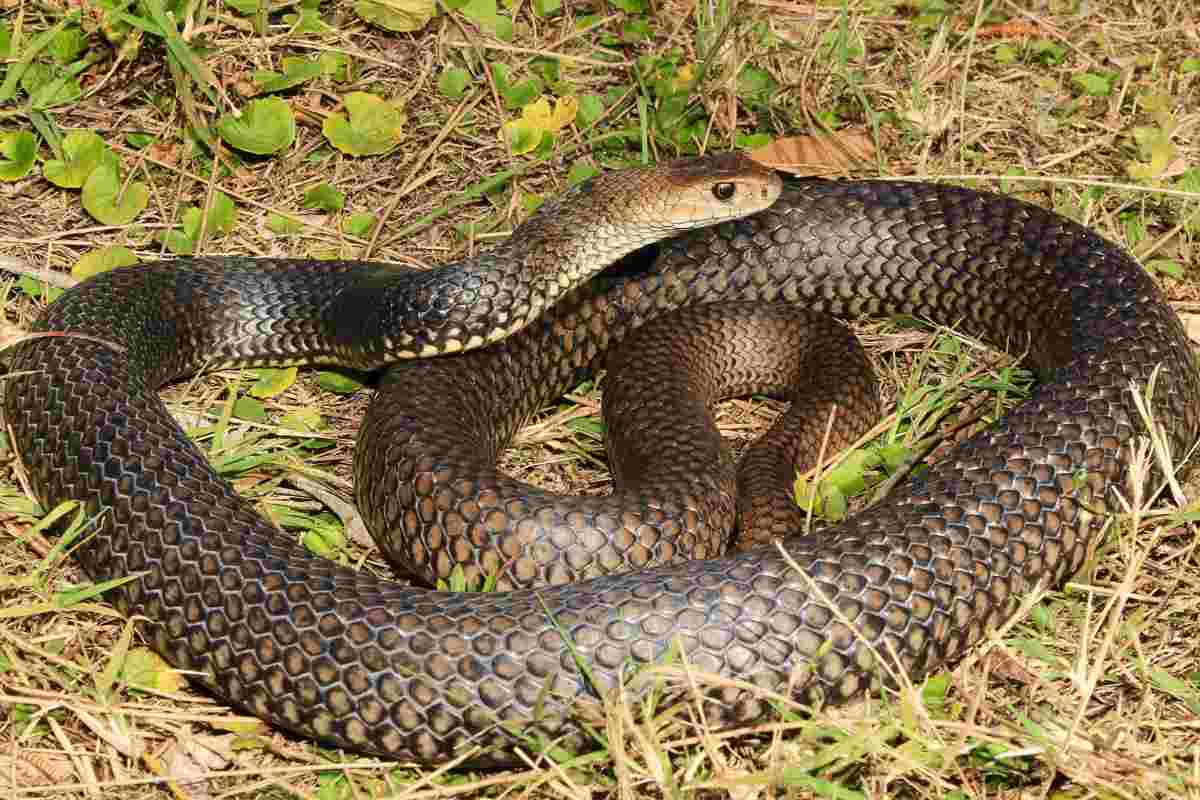
Source: South East Reptile Relocations
The Eastern brown snake (Pseudonaja textilis) is sleek and agile, possessing a uniform colouration that typically ranges from olive to reddish-brown, and a streamlined body built for rapid movement.
Native to eastern Australia, it is frequently encountered in open grasslands, farmlands, and even suburban settings where its camouflaged appearance facilitates ambush hunting. Its diet predominantly consists of small mammals, birds, and various reptiles, captured with swift, precise strikes.
The venom of the Eastern brown snake is among the most toxic in the world, comprising potent neurotoxins and coagulants that can cause rapid paralysis, internal bleeding, and multi-organ dysfunction; a single bite, if untreated, can potentially kill several adults.
Though generally non-aggressive when undisturbed, it may lash out defensively when threatened, resulting in multiple envenomations and critical medical emergencies.
12. Coastal Taipan

Source: qfc
The coastal taipan is another deadly snake found in the Australian outback and is known for its incredible speed. The coastal taipan bites its victim several times before it can even react. It ranges from light olive to dark brown in colour but has reddish eyes. The coastal taipan has a long, slender body.
11. Tiger Snake
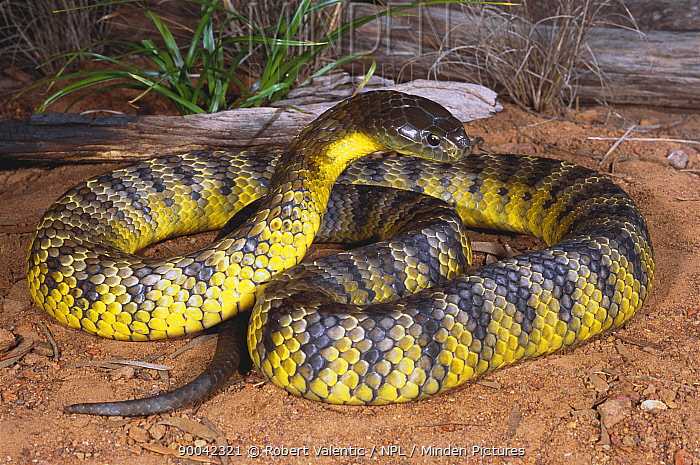
Source: Minden Pictures
The tiger snake (Notechis scutatus) is robust and heavily built, marked with distinctive dark bands set against a background of olive-brown or black scales, giving it an imposing and alert appearance.
Endemic to southeastern Australia, it thrives in a variety of habitats including coastal marshes, grasslands, wetlands, and even the outskirts of urban areas, where its presence can lead to dangerous human encounters. Its diet comprises frogs, small mammals, birds, and reptiles, subdued with venom that combines neurotoxins and coagulants.
Although the precise toxicity may vary, its venom is potent enough to cause severe neurological impairment and blood clotting disorders, making a single bite potentially lethal to multiple individuals if untreated.
Usually, tiger snakes prefer avoidance but will aggressively defend themselves when cornered, resulting in documented annual incidents leading to significant morbidity and occasional fatalities in rural settings. Their striking colouration and defensive posture serve as warnings to potential predators and unwary humans alike.
10. Eastern Diamondback Rattlesnake
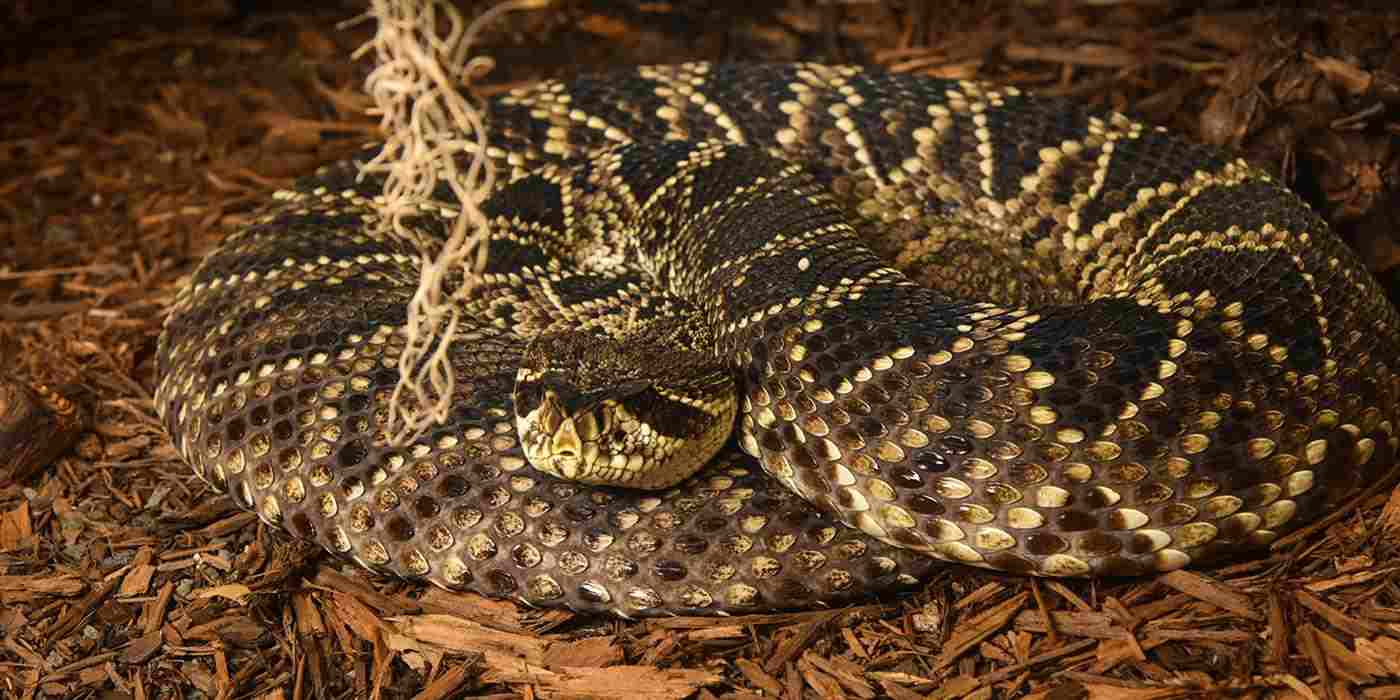
Source: National Zoo
The Eastern diamondback rattlesnake (Crotalus adamanteus) is famed for its impressive size, with a robust body covered in scale patterns that range from brown to tan, accented by distinct diamond-shaped markings along its back, and a characteristic rattle at the tail tip.
Native to the southeastern United States—particularly Florida and neighbouring states—it dwells in dry forests, coastal scrub, and palmetto thickets, where its camouflage provides effective concealment for ambush hunting. Its diet includes small mammals, birds, and occasionally other reptiles, which it subdues with precise, powerful strikes.
The venom, rich in hemotoxins, causes profound tissue destruction, bleeding, and sometimes coagulopathy, with bite incidents historically carrying a fatality rate of 10–20% if untreated. Although relatively reclusive, they exhibit aggressive defensive behaviour when threatened, rattling as a warning.
9. King Cobra
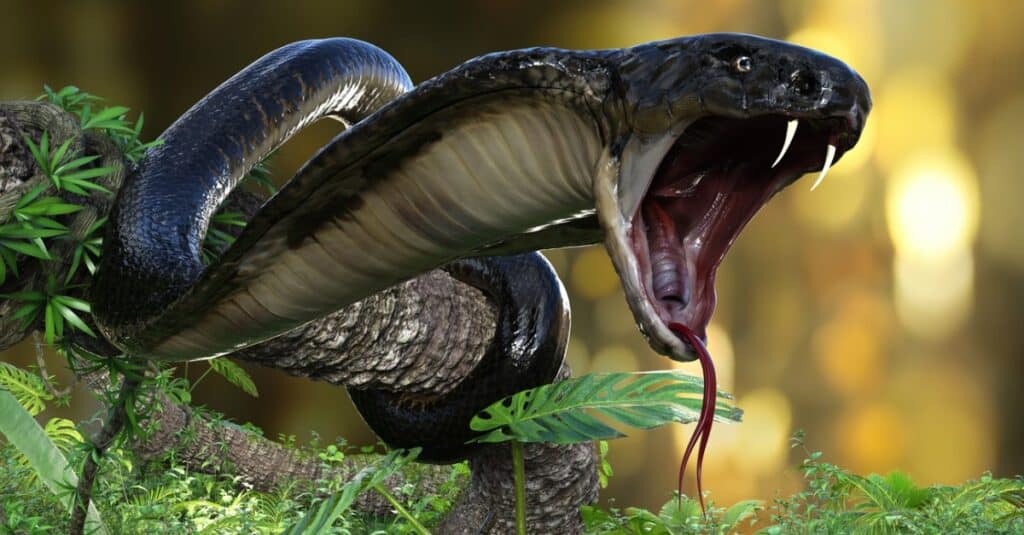
Source: a-z animals
The King Cobra is the snake that comes to mind when one thinks of the creature. Native to South Asia, the king cobra is the longest venomous snake in the world. The king cobra’s bite is so potent that it can slay an elephant within a few hours.
It can grow up to 18 feet in length and lift its head many feet off the ground when provoked. A single king cobra bite can kill a human in 15 minutes, and the snake is known for biting several times in quick succession, injecting around 7 millilitres of venom.
The King Cobra is one of the few creatures in the animal kingdom that eat their own kind.
8. Common Death Adder
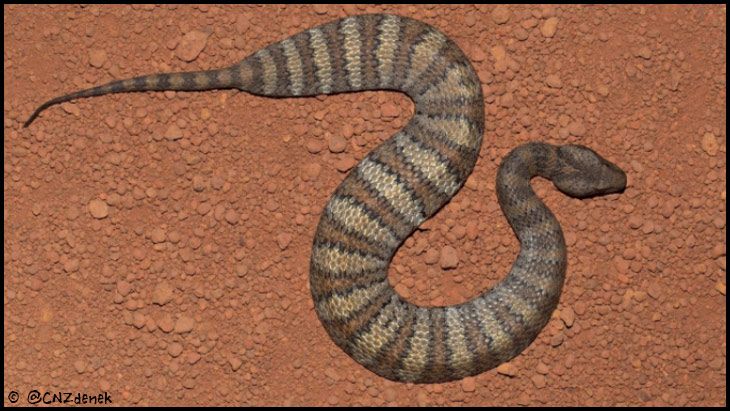
Source: Untamed Science
The common death adder (Acanthophis antarcticus) features a short, stout body with a broad, triangular head and cryptically patterned skin that blends with leaf litter.
Native to coastal regions of Australia—particularly in southern and eastern areas—it favours forest floors, scrublands, and grassy open spaces where ambush hunting is ideal. Preying on small reptiles, frogs, and even birds, it utilises a sit-and-wait strategy before launching a lightning-fast strike.
Its venom, a blend of potent neurotoxins and myotoxins, disrupts nerve signals and muscle function, historically resulting in fatal bites in up to 60% of cases before the availability of antivenom. Despite its typically patient and concealed nature, when inadvertently disturbed (for example, by a footfall), it reacts with sudden, aggressive strikes.
7. Puff Adder

Source: A-Z Animals
The puff adder (Bitis arietans) is robust and stocky, boasting a heavyset body clad in thick, patterned scales that blend hues of brown, yellow, and black, along with a broad, triangular head.
Predominantly found in sub-Saharan Africa and parts of the Middle East, it thrives in savannas, grasslands, scrublands, and even disturbed human habitats where camouflage aids ambush hunting. Feeding primarily on small mammals, birds, and amphibians, the puff adder uses slow, deliberate stalking before executing a sudden strike.
Its venom, rich in cytotoxins and haemotoxins, induces extensive tissue damage and internal bleeding; studies suggest that a single bite might deliver enough toxin to kill multiple adults if antivenom is not promptly administered. Though normally sedentary and relying on concealment, this snake can be highly aggressive when disturbed.
6. Indian Cobra
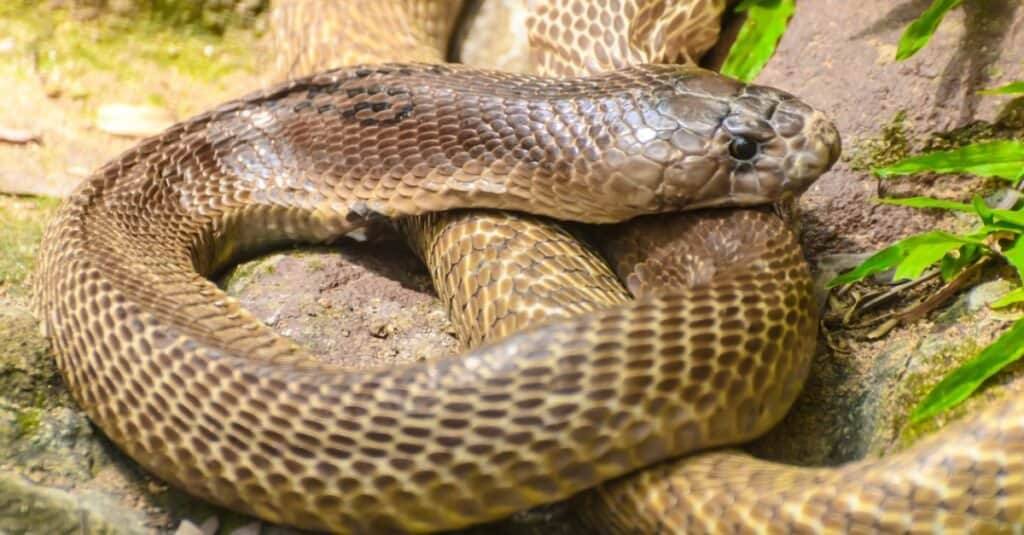
Source: A-Z Animals
The Indian cobra (Naja naja) is instantly recognisable by its broad, hooded head, smooth scales, and striking colouration varying from olive to tan with a characteristic chequered pattern along its flanks.
Endemic to the Indian subcontinent, it occupies diverse habitats, including open forests, farmlands, and even suburban areas, which frequently brings it into proximity with humans. Its diet primarily consists of rodents, amphibians, and smaller reptiles, subdued swiftly using highly potent neurotoxic venom.
A single bite can deliver a substantial dose—sufficient to cause rapid neuromuscular blockade, paralysis, and, if untreated, death of several adults. Though it generally prefers to avoid confrontation, when provoked, it displays an intimidating hood flare and can strike repeatedly.
5. Common Krait
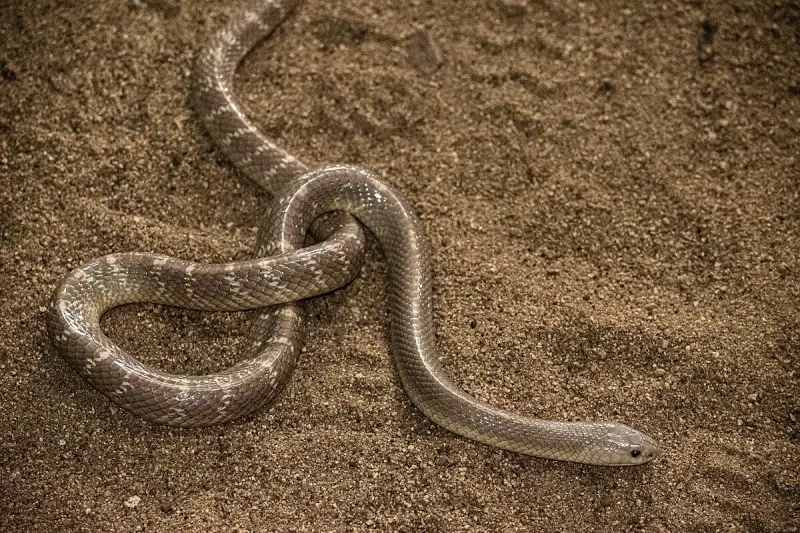
Source: Animalia
The common krait (Bungarus caeruleus) displays a slender, elongated body with smooth, glossy scales that range from deep bluish-black to inky charcoal, often accented by narrow, contrasting bands along its length.
Widely distributed throughout the Indian subcontinent, it inhabits fields, rice paddies, abandoned structures, and even the outskirts of human dwellings—often emerging at night under the cover of darkness. Its diet includes small rodents, lizards, and other reptiles, which it ambushes with stealth and rapid strikes.
The krait’s neurotoxic venom is among the most potent in the world; even minute amounts are sufficient to cause neuromuscular paralysis, with estimated lethal doses low enough that one bite, if untreated, could claim the lives of several adults.
4. Russell’s Viper

Source: iNaturalist
Russell’s viper is an indigenous snake of the Indian subcontinent and one of the big four snakes in India. It causes thousands of deaths every year. The Russell’s viper has a round, thick body with a short tail and a length of around 4 to 6 feet.
The Russell’s viper is able to camouflage due to its black and brown colour and often attacks farmers while hiding in fields. Its venom is highly potent, making it one of the deadliest vipers on the planet.
The Russell's viper’s venom has the ability to kill 22 humans in a single bite. The venom causes acute bleeding, defibrination, haemorrhage, shock, and renal failure within a couple of hours of a snake bite.
3. Black Mamba
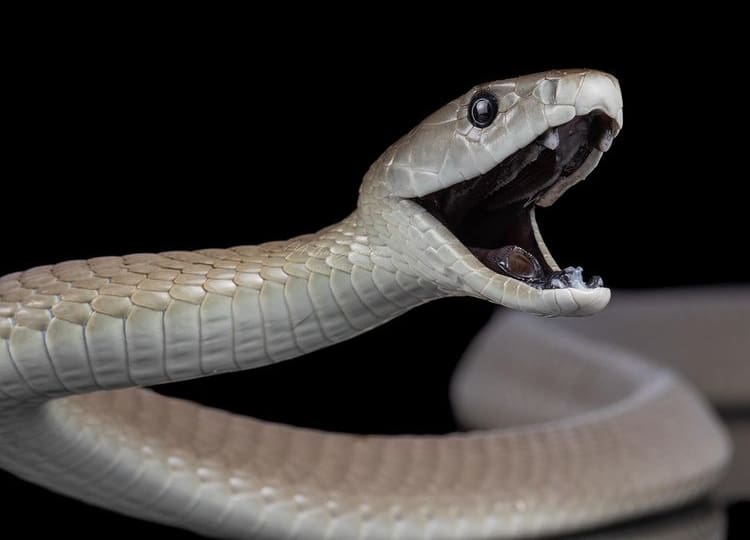
Source: Wildest
The black mamba is found in southern and eastern areas of Africa and is one of the longest and fastest snakes in the world. Black mambas can grow up to 14 feet in length and slither at speeds of 12.5 miles per hour. Their large size, combined with their agility, makes them lethal predators.
Black mambas have light grey or brown-coloured skin but get their name from the dark colour of the inside of their mouths. The black mamba’s venom is neurotoxic in nature and works extremely quickly.
An infected individual experiences intense pain at first and passes into a coma within an hour. You’ll be dead from the black mamba’s venom within 6 hours without an antidote.
2. Inland Taipan

Source: Moneycontrol
The inland taipan is the deadliest and most venomous snake in the world. Found in Australia, the inland taipan is dark tan with dark-edged scales. It has the most toxic venom of all snakes.
The inland taipan’s venom has the potency to kill 100 humans in a single bite. The venom’s effects begin showing up within a few minutes after the bite and can kill the victim in less than an hour.
The inland taipan is not an aggressive snake and stays wary of humans, but attacks with astonishing speed when provoked.
1. Saw-scaled Viper
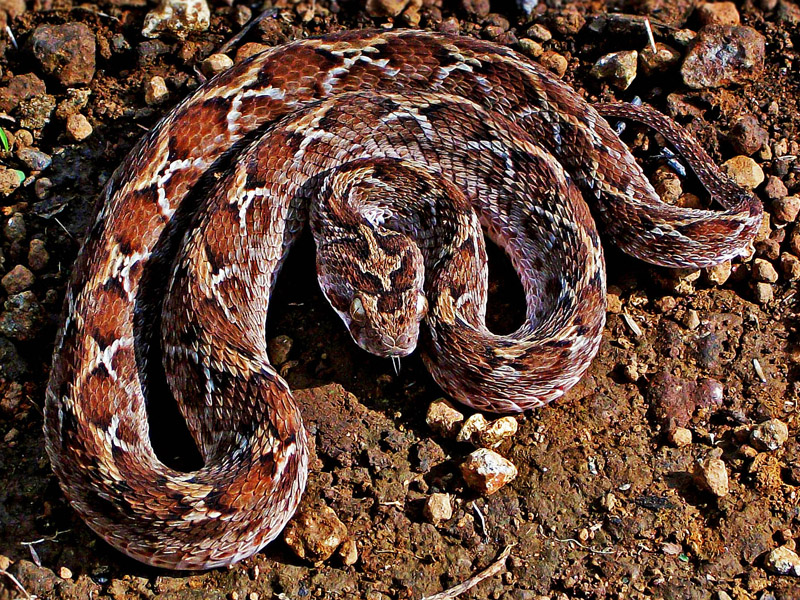
Source: wikimedia commons
The saw-scaled viper is the deadliest snake in terms of the kill count. Scientists estimate that it’s responsible for more human fatalities than all other snake species combined. The saw-scaled viper is found in regions of Africa, the Middle East, and the Indian Subcontinent.
They are one of the scariest and most aggressive snakes and are known for their distinctive threat display of producing a sharp sizzling sound by rubbing their bodies. Saw-scaled vipers are small in size and only inject a small quantity of venom in a bite, but they can kill a human within hours.
What's Next| 9 Of The Most Expensive Cat Breeds In The World
Comments
All Comments (0)
Join the conversation